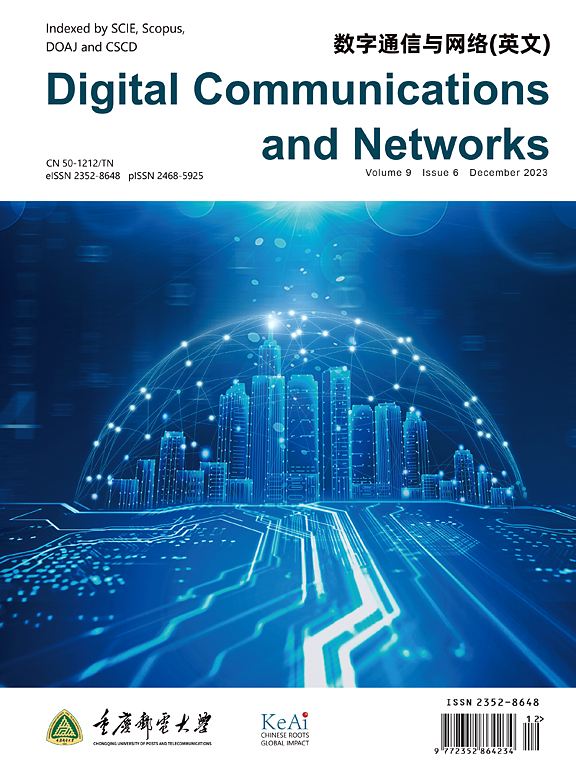Explainable AI for epileptic seizure detection in Internet of Medical Things
IF 7.5
2区 计算机科学
Q1 TELECOMMUNICATIONS
引用次数: 0
Abstract
In the field of precision healthcare, where accurate decision-making is paramount, this study underscores the indispensability of eXplainable Artificial Intelligence (XAI) in the context of epilepsy management within the Internet of Medical Things (IoMT). The methodology entails meticulous preprocessing, involving the application of a band-pass filter and epoch segmentation to optimize the quality of Electroencephalograph (EEG) data. The subsequent extraction of statistical features facilitates the differentiation between seizure and non-seizure patterns. The classification phase integrates Support Vector Machine (SVM), K-Nearest Neighbor (KNN), and Random Forest classifiers. Notably, SVM attains an accuracy of 97.26%, excelling in the precision, recall, specificity, and F1 score for identifying seizures and non-seizure instances. Conversely, KNN achieves an accuracy of 72.69%, accompanied by certain trade-offs. The Random Forest classifier stands out with a remarkable accuracy of 99.89%, coupled with an exceptional precision (99.73%), recall (100%), specificity (99.80%), and F1 score (99.86%), surpassing both SVM and KNN performances. XAI techniques, namely Local Interpretable Model-Agnostic Explanations (LIME) and SHapley Additive exPlanation (SHAP), enhance the system's transparency. This combination of machine learning and XAI not only improves the reliability and accuracy of the seizure detection system but also enhances trust and interpretability. Healthcare professionals can leverage the identified important features and their dependencies to gain deeper insights into the decision-making process, aiding in informed diagnosis and treatment decisions for patients with epilepsy.
医疗物联网中用于癫痫发作检测的可解释AI
在精准医疗领域,准确的决策至关重要,这项研究强调了在医疗物联网(IoMT)的癫痫管理背景下,可解释的人工智能(XAI)的必要性。该方法需要细致的预处理,包括应用带通滤波器和历元分割来优化脑电图(EEG)数据的质量。随后提取的统计特征有助于区分癫痫发作和非癫痫发作模式。分类阶段集成了支持向量机(SVM)、k近邻(KNN)和随机森林分类器。值得注意的是,SVM的准确率达到了97.26%,在识别癫痫发作和非癫痫发作的准确率、召回率、特异性和F1评分方面都表现出色。相反,KNN的准确率为72.69%,伴随着某些权衡。随机森林分类器以99.89%的准确率脱颖而出,加上卓越的精度(99.73%),召回率(100%),特异性(99.80%)和F1分数(99.86%),超过了SVM和KNN的性能。XAI技术,即局部可解释模型不可知论解释(LIME)和SHapley加性解释(SHAP),增强了系统的透明度。这种机器学习和XAI的结合不仅提高了癫痫检测系统的可靠性和准确性,而且增强了信任度和可解释性。医疗保健专业人员可以利用已确定的重要特征及其依赖性来深入了解决策过程,帮助癫痫患者做出明智的诊断和治疗决策。
本文章由计算机程序翻译,如有差异,请以英文原文为准。
求助全文
约1分钟内获得全文
求助全文
来源期刊

Digital Communications and Networks
Computer Science-Hardware and Architecture
CiteScore
12.80
自引率
5.10%
发文量
915
审稿时长
30 weeks
期刊介绍:
Digital Communications and Networks is a prestigious journal that emphasizes on communication systems and networks. We publish only top-notch original articles and authoritative reviews, which undergo rigorous peer-review. We are proud to announce that all our articles are fully Open Access and can be accessed on ScienceDirect. Our journal is recognized and indexed by eminent databases such as the Science Citation Index Expanded (SCIE) and Scopus.
In addition to regular articles, we may also consider exceptional conference papers that have been significantly expanded. Furthermore, we periodically release special issues that focus on specific aspects of the field.
In conclusion, Digital Communications and Networks is a leading journal that guarantees exceptional quality and accessibility for researchers and scholars in the field of communication systems and networks.
 求助内容:
求助内容: 应助结果提醒方式:
应助结果提醒方式:


